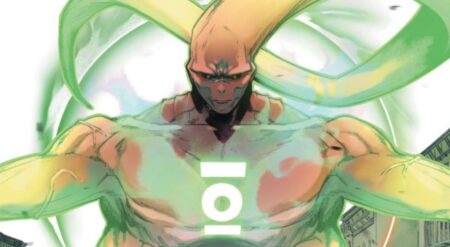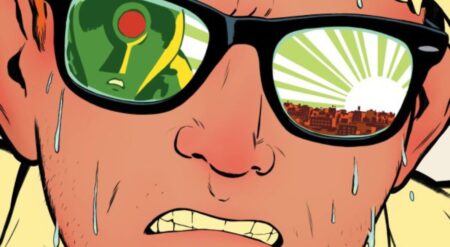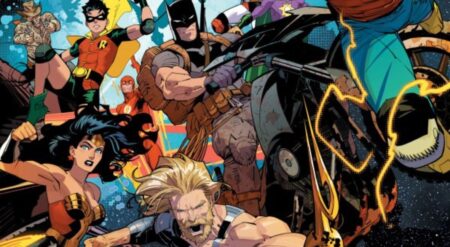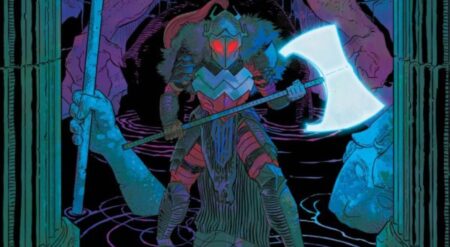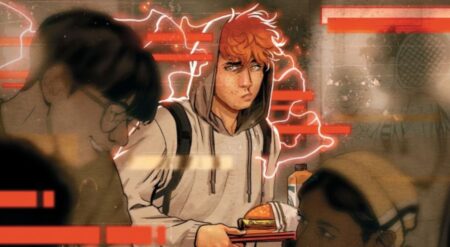
The Joker #4 is published by DC Comics, written by James Tynion IV and Sam Johns, with art by Guillem March and Mirka Andolfo, colors by Arif Prianto and Romulo Fajardo Jr., with letters by Ariana Maher and Tom Napolitano. Having caught up to The Joker far quicker than he expected, Jim Gordon now finds himself in the middle of a shoot-out he might not be able to escape from. Meanwhile, the Batgirls continue their surveillance of Cressida, and the situation at Blackgate with Punchline continues to evolve.
They say nothing brings a person’s life into perspective, like almost losing it. The stark reminder of one’s mortality pulls back the lies and convenient truths we tell ourselves, leaving us only with the truth. Whether or not this is a universal occurrence or not, I cannot say, but Gordon sure seems to be seeing his life through a new light as the bullets start flying in The Joker #4.
Gordon’s somber self-analysis works to deliver a stark contrast to the anarchy that surrounds him. In addition, it keeps the madness of The Joker’s showdown with those looking to kill him grounded. This allows the moment to play out in a way that lends it weight and gravity instead of simply being a bonkers comic firefight. Tynion’s decision to play this opening sequence this way is an excellent choice, as it allows the story to go for a big, explosive moment while maintaining the heavier tone of the series.
Back in Gotham, Barbara, Steph, and Cassandra continue to attempt to unravel the mystery surrounding Gordon’s rich benefactor. This interlude brings the story back down from the explosive battle that opens the book. Seeing the Batgirls hard at work lands like a narrative palette cleansing.
The Joker #4′s primary story ends with a moment between Gordon and Joker that quickly ratchets the story’s tension back up as Tynion’s script delivers The Joker’s voice in all its unbalanced viscousness. The final portion of this issue continues the secondary story surrounding Punchline and Bluebird. With Bluebird struggling to escape from the trap set for her, the situation is dire. Meanwhile, Punchline is found unconscious after her run-in with Orca. Both pieces of this story delivered some surprises with how their respective situations came to resolve themselves.
While I enjoyed this book’s story, it is the art that truly steals the show. March’s ability to capture The Joker’s sporadic fits and outbursts perfectly captures the classic antagonist’s wild brutality. March’s lines are further brought to life through Prianto’s colors. Just how much Prianto’s colors bring to this book is best shown in the closing sequence between Gordon and The Joker. The scene’s only light source, a barrel fire, delivers the perfect hues and lighting for the scene’s mood, thanks to Prianto’s amazing work.
The art in The Joker #4’s secondary story also works well to deliver its story’s energy. Artist Andalfo and colorist Fajardo capture both sides of the story wonderfully. Giving it a strong look that both works on their own, as well as creating a striking contrast with the book’s main story. Wrapping up our time with this book is the letter work by Napolitano and Maher, who both do an excellent job delivering their respective stories.
When all is said and done, The Joker #4 continues to maintain the high bar of quality it has established in its preceding issues.
The Joker #4 is available now wherever comics are sold.
The Joker #4
TL;DR
When all is said and done, The Joker #4 continues to maintain the high bar of quality it has established in its preceding issues.

